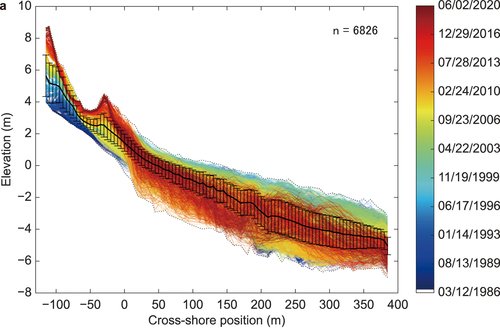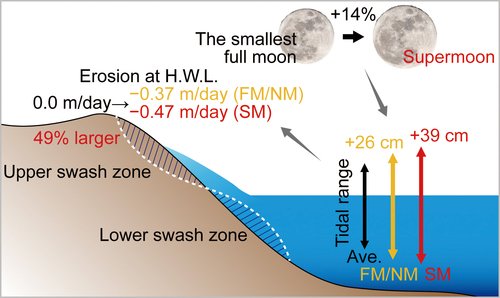Major Research 4B Research on Coastal and Estuarine Processes
Background and Objectives
PARI's research activity of littoral drift was started to examine the critical water depth of sediment movement for harbor planning. Now, prevention methods against sedimentation and also siltation are proposed. However, in Japan, sedimentation and siltation are still progressing in some ports, while in other countries their ports are expected to experience far greater amounts of sedimentation and siltation than in Japan, which indicates that the currently available techniques are inadequate for addressing this global issue of sedimentation and siltation which are damaging navigation channels and harbor basins. Meanwhile, many precious natural beaches were lost during the period of rapid economic growth, and this negative trend is yet to be reversed. Although the many benefits that beaches yield for protection, environmental conservation, and human use are clearly recognized, and they are being restored on certain coastlines by taking measures to suppress coastal erosion, global warming is also expected to exacerbate coastal erosion in the future. Also, when remote islands and overseas are taken into account, it is important to maintain not only beaches but also coral-reef coasts. PARI is currently focusing on identifying means for effectively preserving both natural coastal topography, such as beaches, mangrove shorelines, and coral-reef coasts, and artificial coastal features, including navigation channels and harbor basins that are crucial for logistics, despite the ongoing trend of climate change. Furthermore, PARI is working to predict key changes in coastal erosion as well as sedimentation and siltation affecting navigation channels and harbor basins, and to suggest measures to effectively address these issues while assuming that the trend of global warming might persist. In addition, we will clarify siltation processes in the estuaries of large rivers, mangroves and intertidal zone in the Asian countries, and then propose countermeasures against such phenomena.
Research Topics
For research and development on the formation and preservation of coastal topography, we are focusing on the following:
For the development of a model to predict global coastal morphological changes induced by climate change, we are working on generalizing the parameters of our previously developed model to make the model applicable to other beaches and to predict the future coastal changes. We are also developing a deep-learning model for predicting beach profile changes and verifying its applicability.
For the breakthrough of coastal topographical changes mechanism and the development of our prediction model, we are continuing with our on-site observations at the Hazaki Oceanographical Research Station while working out how to apply our prediction model to the field of navigation channels, harbor basins, and coastal beaches.
For the development of a sediment transport control method to minimizee harbor siltation, we are improving our previously developed sand-mud-mixture bottom sediment model while analyzing related in-situ data so that the model can be properly applied to actual coastal zones.
Activities in FY 2020
We statistically analyzed beach morphological changes previously obtained on Hasaki beach to evaluate the climate change impacts. We will use the statistical information as a basis for generalizing our prediction model with comparing model parameters and beach physical indices. In particular, we focused on tidal fluctuation (especially those caused by a supermoon), which is one of the water-level changes. It was elucidated that the effects of the tidal fluctuations on the responses of beach morphological changes in the swash zones. The beach processes were previously unknown and these findings were also published in an international academic journal and some domestic news. While the work on generalizing model parameters is still in progress, we are simultaneously developing a model representing beach profile changes utilizing deep learning. Thus, we are steadily building the methods to perform future beach prediction from wide-ranging perspectives.

Beach profile changes observed over the past 34 years

Supermoon's effects on beach morphological changes
As for the clarification of coastal topographic change mechanism and the development of a coastal topographic change prediction model, we continuously conducted on-site observation of wind, waves, currents and topographic changes at the Hazaki Oceanographical Research Station. In addition, we improved our prediction model for topographic changes near pile structures that might occur in the surf zone where the wave and current would change in a complex manner due to breaking waves.
For our study to elucidate the mechanism of sediment transport around estuaries and sedimentation in navigation channels and harbor basins, we improved our previously developed sand-mud-mixture bottom sediment model and analyzed related in-situ data so that the model can be applied to actual coastal zones (e.g., in Patimban, Indonesia). In addition, we analyzed existing in-situ data in a domestic estuarine port, e.g. Niigata Port (West Port district), to develop a numerical model that can properly simulate the sedimentation mechanism that occurs in the field.



